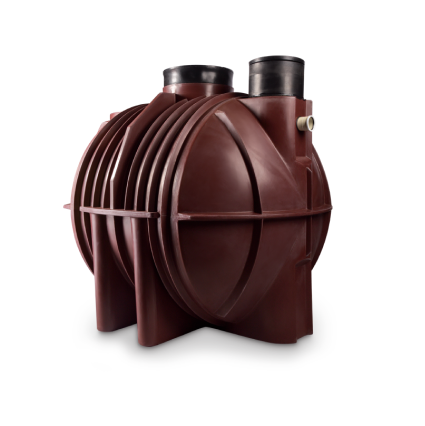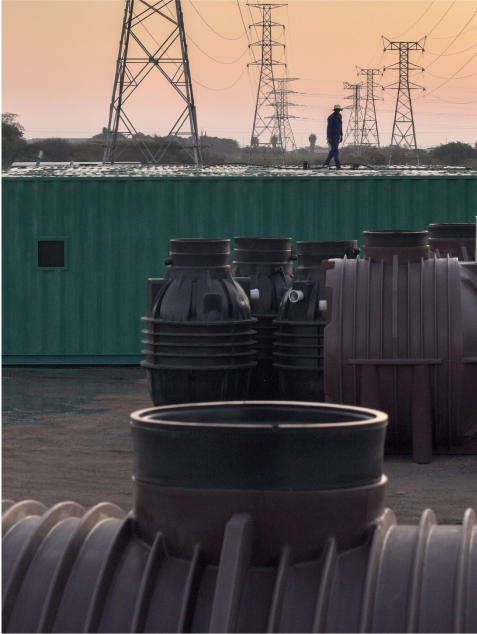Conservancy Tanks
Our conservancy tanks cater for the temporary disposal of wastewater on-site while preventing harmful soil and groundwater contamination.
The purpose of a conservancy tank
A conservancy tank’s function is to temporarily collect and retain domestic wastewater on the premises, ensuring that it does not contaminate groundwater.
The main components
A tank
Installed underground, in which wastewater is temporarily stored. It is very important that a conservancy tank is sized correctly, as higher volumes of wastewater will require more frequent disposal.
Waste removal
Once the tank reaches its capacity, the wastewater must be pumped out and transported to an appropriate treatment plant. Alternatively, instead of disposal, the wastewater can undergo treatment in an on-site wastewater treatment plant for reuse in non-potable applications.
How it works

Wastewater is directed into the tank via the inlet. Note: The tank size should be carefully considered as higher volumes of wastewater require more frequent disposal.
When the tank is full, the waste is pumped out through the lid/manhole and disposed of in compliance with the relevant legislation.
Ensure that there is a waste disposal company in your area that can assist with the disposal of the waste as and when required. Keep in mind that the waste must be collected and then transported to an appropriate treatment plant.
Important
The illustration above depicts the usage of a conservancy tank for wastewater storage. How you plan to utilise the conservancy tank will influence the connection and installation configuration. To ensure we offer you the right setup and guidelines based on your needs, please specify the intended contents for storage in our conservancy tanks.
Types of conservancy
Here are the tanks from our range that can serve as conservancy tanks:
Ideal applications
Installing a conservancy tank is an ideal solution in areas where connecting to a sewer line is not possible, and using septic tanks or wastewater treatment plants is not feasible or permitted.
Key differentiators
Engineered to last
Our roto-moulding process ensures the production of watertight tanks that are sturdy and resistant to corrosion, a crucial factor in preventing harmful soil and groundwater contamination.
Durability
Designed for a lifespan of approximately 30 years.
Scalability
Our conservancy tanks are available in modular units for increased capacity.
Ease of use
Designed with ease of operation and maintenance taken into consideration.


